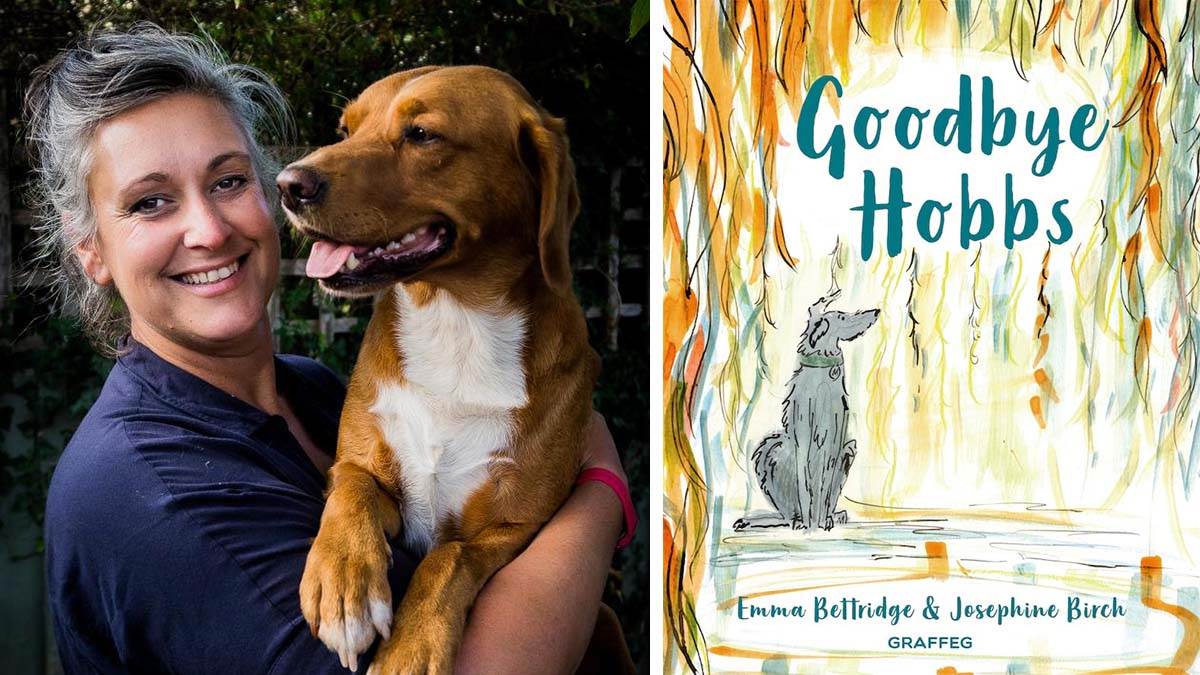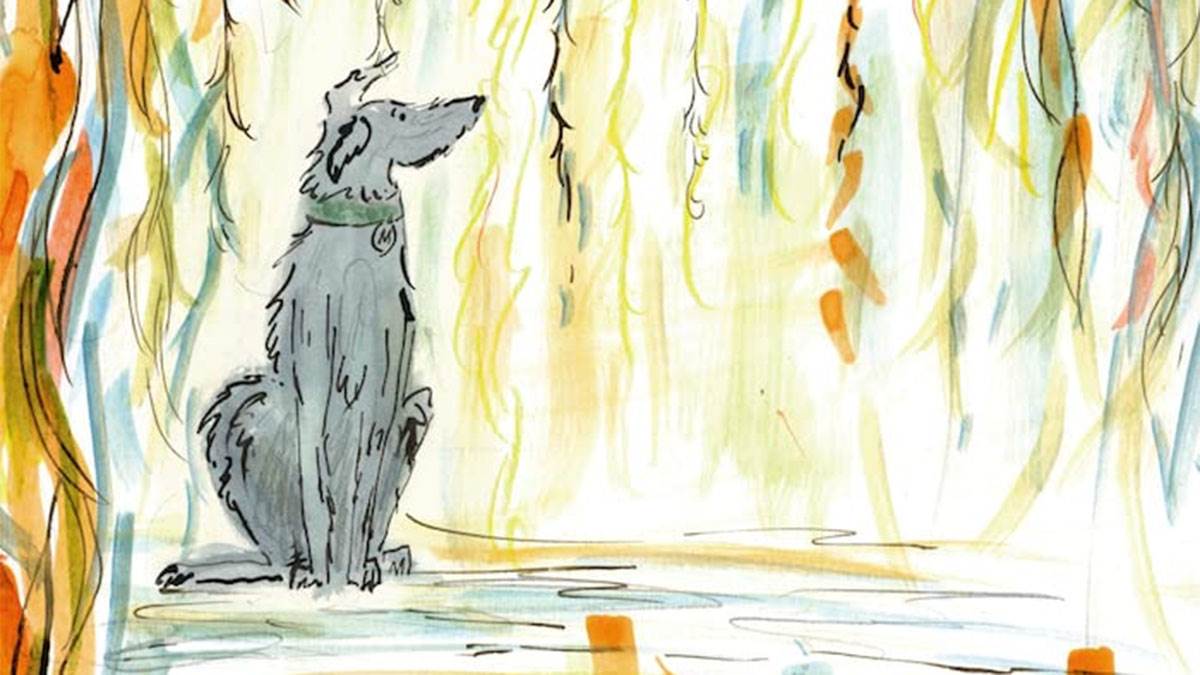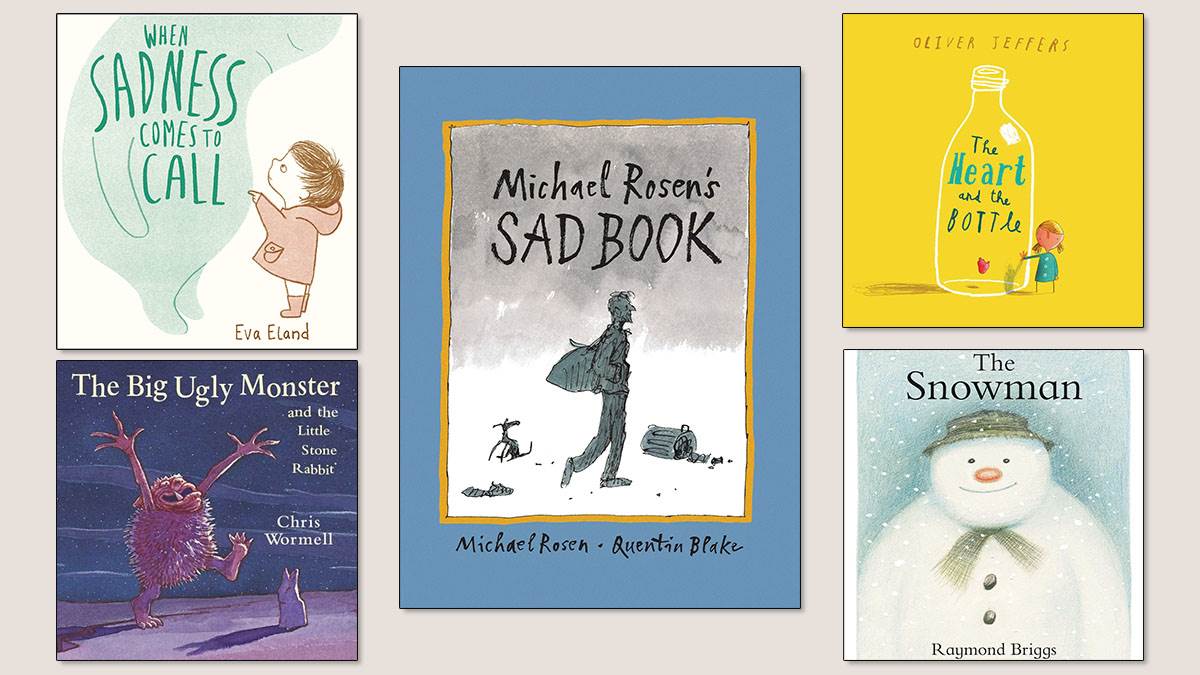How to use books and animals to help children talk about their emotions
Published on: 3 Ionawr 2023
Emma Bettridge's story Goodbye Hobbs is a moving tale about a dog missing his late companion. Here, she shares how books and animals can help children open up about their emotions...

Photo: Claire Fear
My friend Joseph is 9. I've known him for most of his life (his mum and I were together for five of those years) and we have very similar interests - stomping through woods, stomping on moors, stomping across rivers. Stomping.
In that time with Joe there were always animals - one cat, Fog, and four dogs, Hobbs (gone but not forgotten in my book Goodbye Hobbs), Arthur, and latterly Red and Nell.
The notion to consider animal behaviour as a teaching aid for young children all started with a conversation following Joseph being knocked into by Red. Joseph was immediately insistent that Red had run into him deliberately. So we both took a big breath and talked about it.
We started off by wondering aloud why Red would try and deliberately bash him. We looked at the context - Joe had a big stick - and talked through what happened. Red really wanted the stick. Joe had the stick. Maybe Red was SO EXCITED he couldn't hold in his energy. Joe thought about this and agreed that sometimes he needs to do massive whizzing because he feels like he's full of bees.
Noticing the similarities between children and animals
As we embarked on each new adventure, it became an organic thing to combine dogs and feelings. When Joe was very young I can remember trying not to always be saying, 'Don't do that. Stop that. Because I said so.' Rather, I tried to encourage thought about what Arthur or Hobbs might be showing us in their behaviour. The Arthur growl, for instance - he's politely but quite clearly saying, 'Leave me alone'.
Dogs work on instinct, and young children do too.
They both regulate through movement, something I've witnessed in Joseph and Red. There's a need to move, particularly when they're worried about going somewhere new and alien. Shyness is expressed in huge anxious rapid movements. Behaviour gets misread as 'naughty'. Joseph sometimes just needs to run, move his body, feel his own body in the world. And after that have a massive hug from one of his beloved people.

Illustration: Josephine Birch
Joseph was very young when I got Red and I could've thought a bit more about how to introduce him, because there was almost a sibling-like jealousy towards the puppy Red - intense love and excitement, but also, 'Why is this dog getting so much attention?'
The opportunity to revisit this was through the arrival of Nell. Joe was just 8 when I got her and in the lead-up to her arrival, we talked a lot about how to prepare Red. Which was genuine, but I was also checking that Joe was cool with it - that he understood what Red (and he) might need as we adopted Nell, and then what she might need. What Red might be feeling (a bit worried, jealous, that he wasn't as important any more) and how we could help him with that. How important it was to make sure he has his own space (armchair), that he can eat his tea in peace, that we give him lots of scratches and play his best game ever - the tennis ball.
In doing all this, Joseph felt included, needed, validated and an intrinsic part of Nell's arrival and Red's preparation. By asking Joe to try and understand both Red and Nell, he could subconsciously understand himself.
The importance of little rituals
The bond between Joseph and Red inspired my next book Red is Home, a story about a dog who lives in two houses, with things he does in each to feel safe and happy. One of those houses is about to change as the family are moving home, so Red is nervous about what to expect.
These feelings and actions were inspired by boy and dog. When Joe came to my house, he went up to his room to rifle through his drawer of things and would always ask to go to the field before bed. Little rituals. When Red went to Joe's house he barrelled in at a hundred miles an hour and did a lap of the house before settling on the sofa. Little rituals. These things are important. And we can reflect them back to children by observing and talking about it.
Why is Arthur growling and shaking at the same time when he sees a cat? Excitement? Wants to CHASE but also a bit scared? Wants to make it go away? How might we be able to help him? What could change?
By asking these types of questions, we are asking children to step outside of their own experience and consider that of another being.
Another useful way to ask children to consider the feelings of another being is through sharing stories with them. Whether they are stories about animals, or stories about humans, reading together from a young age develops empathy, and helps begin conversations about feelings, both positive and negative.
Here are five of my favourite picture books that explore emotions...

The Heart and the Bottle by Oliver Jeffers
I struggle to make it through this without the creep of grief up my spine. This is a completely brilliant story about boxing up our heart when tragedy strikes and forgetting ourselves for a while. A beautiful tale about one girl's sadness as she grows up without the person who helped her discover the world.
Michael Rosen's Sad Book by Michael Rosen and Quentin Blake
The honesty of this book is flooring, and truly demonstrative of the desperate impact death has on our life, particularly when it is someone young. A raw, honest and truly gutting account of Michael Rosen losing his son.
When Sadness Comes to Call by Eva Eland
Sadness is an entity - in this case a kindly green transparent friend - which comes to visit from time to time. This book looks at how to embrace sadness, whether all-consuming or not there for a while. A beautiful and clever look at how to manage day-to-day feelings of sadness and loss.
The Big Ugly Monster and the Little Stone Rabbit by Chris Wormell
A book about a monster so ugly (and so lonely) that no animal will dare to go near them. The monster carves a little stone rabbit to live out his days with, until one day he doesn't come out of his cave, and as time passes and animals (and flowers) return, the little stone rabbit remains. This book, for me, was about what remains when we have gone. A beautiful and thoughtful tale.
The Snowman by Raymond Briggs
A classic, of course, about going with the flow and enjoying life in moments. That ending, though... heart-wrench.
Read our review
Author: Emma Bettridge Illustrator: Josephine Birch
Merlin the dog desperately misses his friend Hobbs, and finds some comforting scent messages from him. A touching story about grief – perfect for anyone who’s lost a pet.
More books to try
Supporting a healthy mind
We've put together a list of beautiful picture books that are perfect for sharing with young children to help you talk about emotions together.
Topics: Animals, Mental health, Features, Feelings







